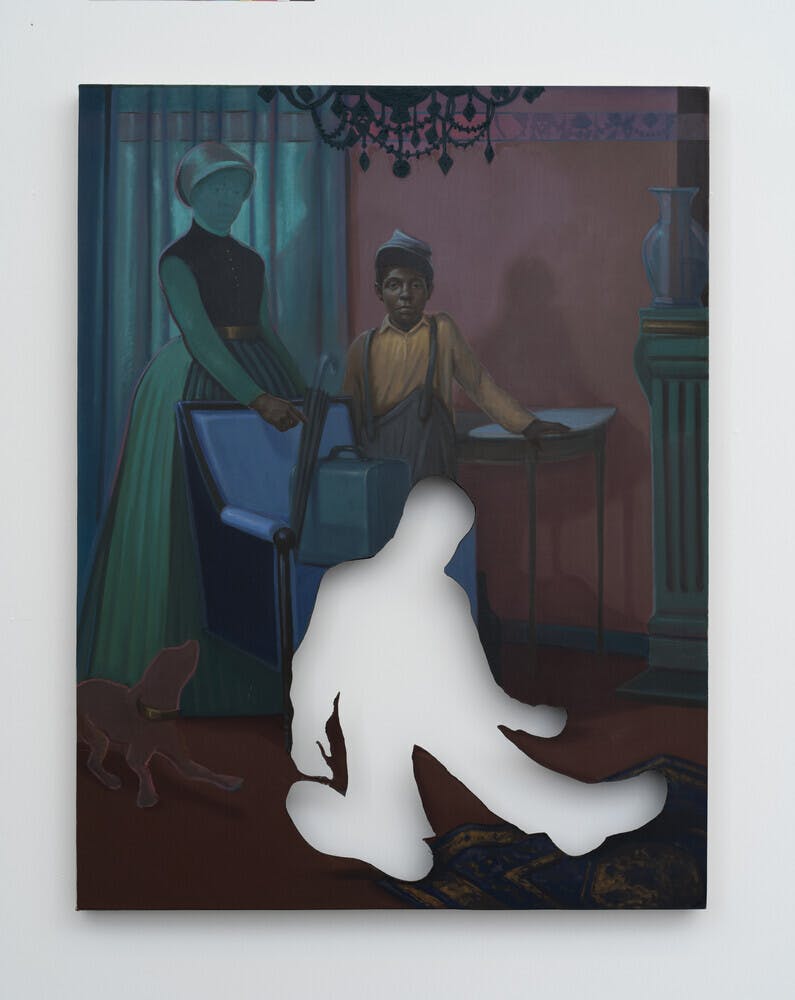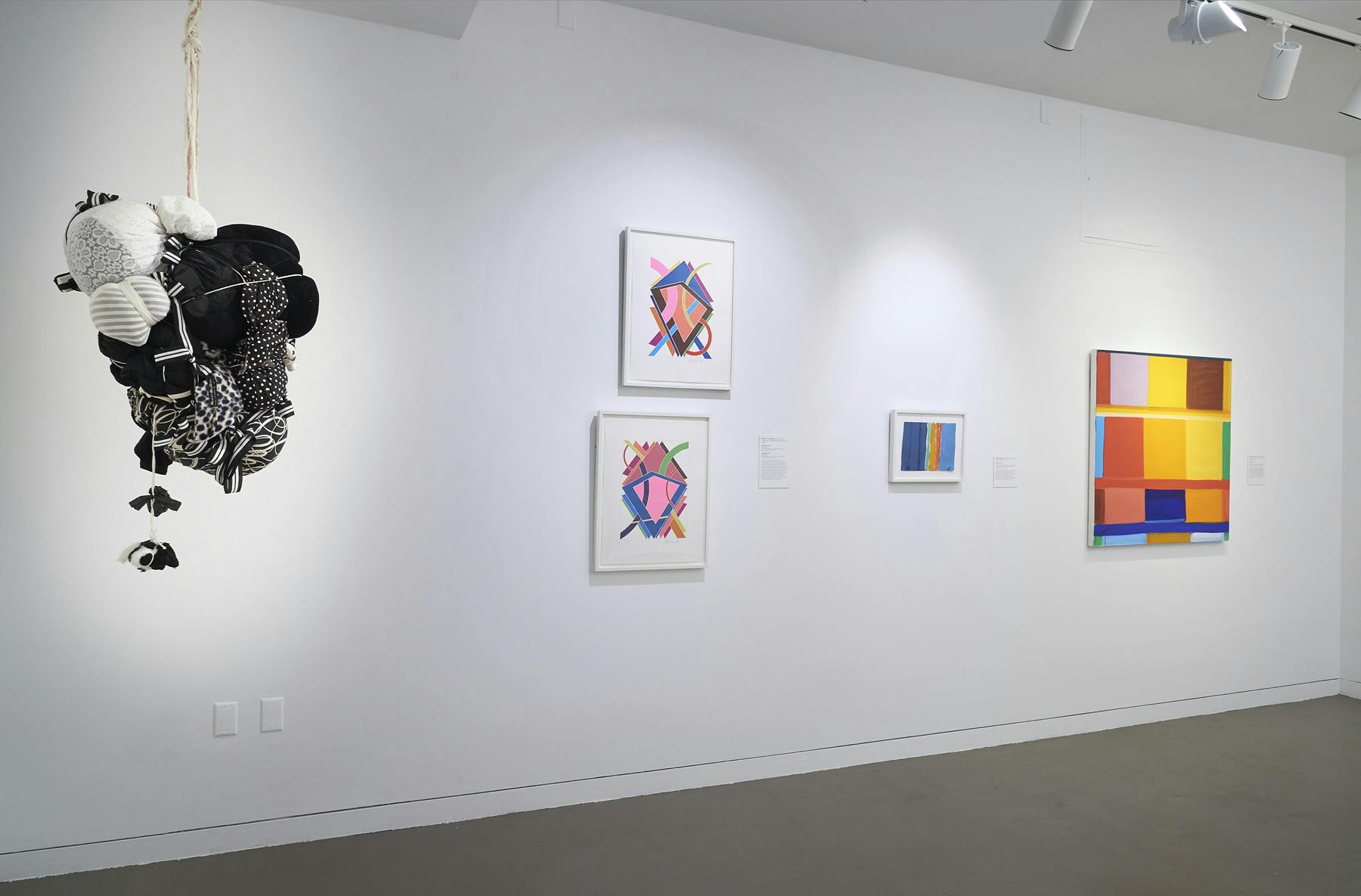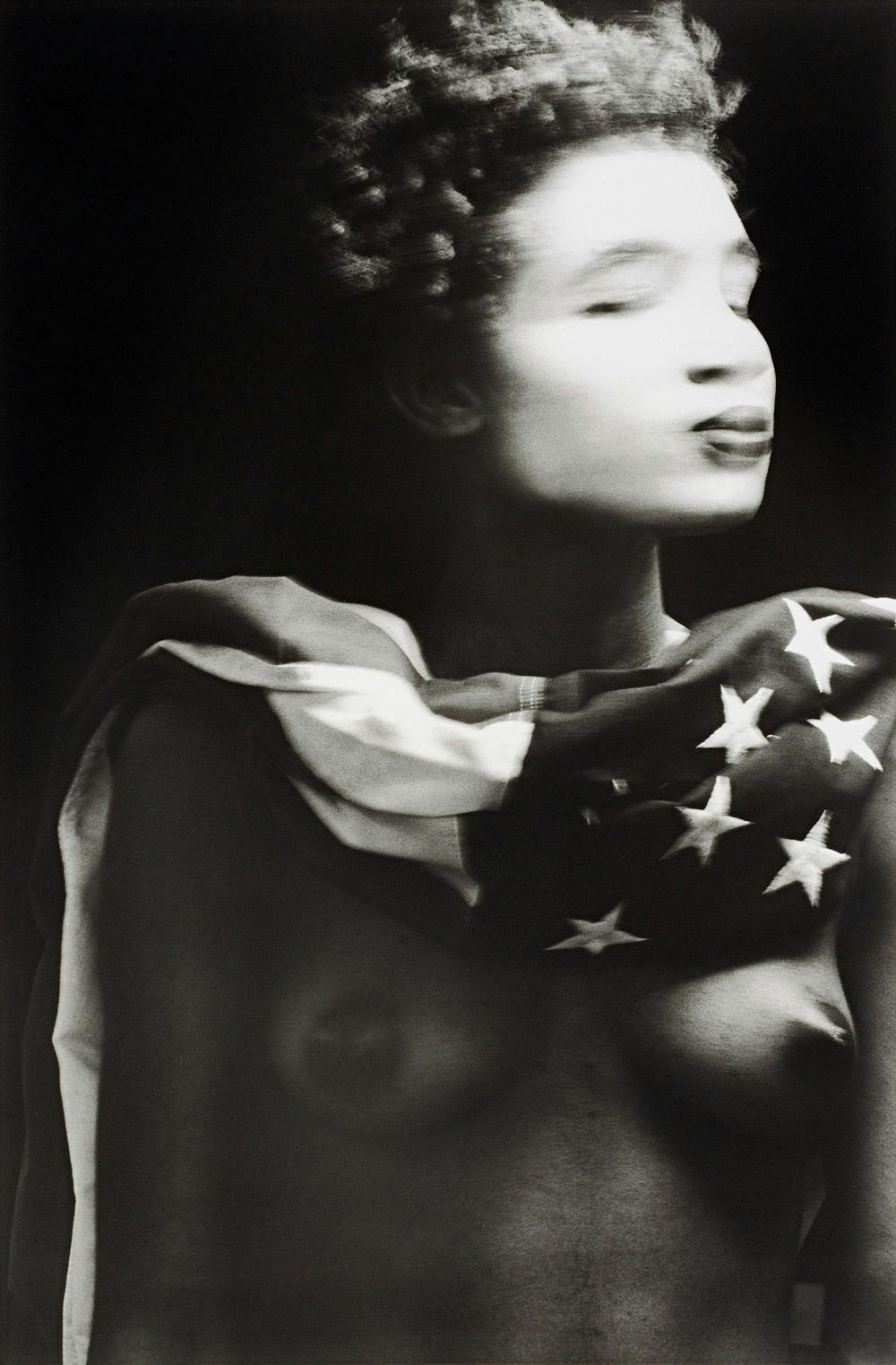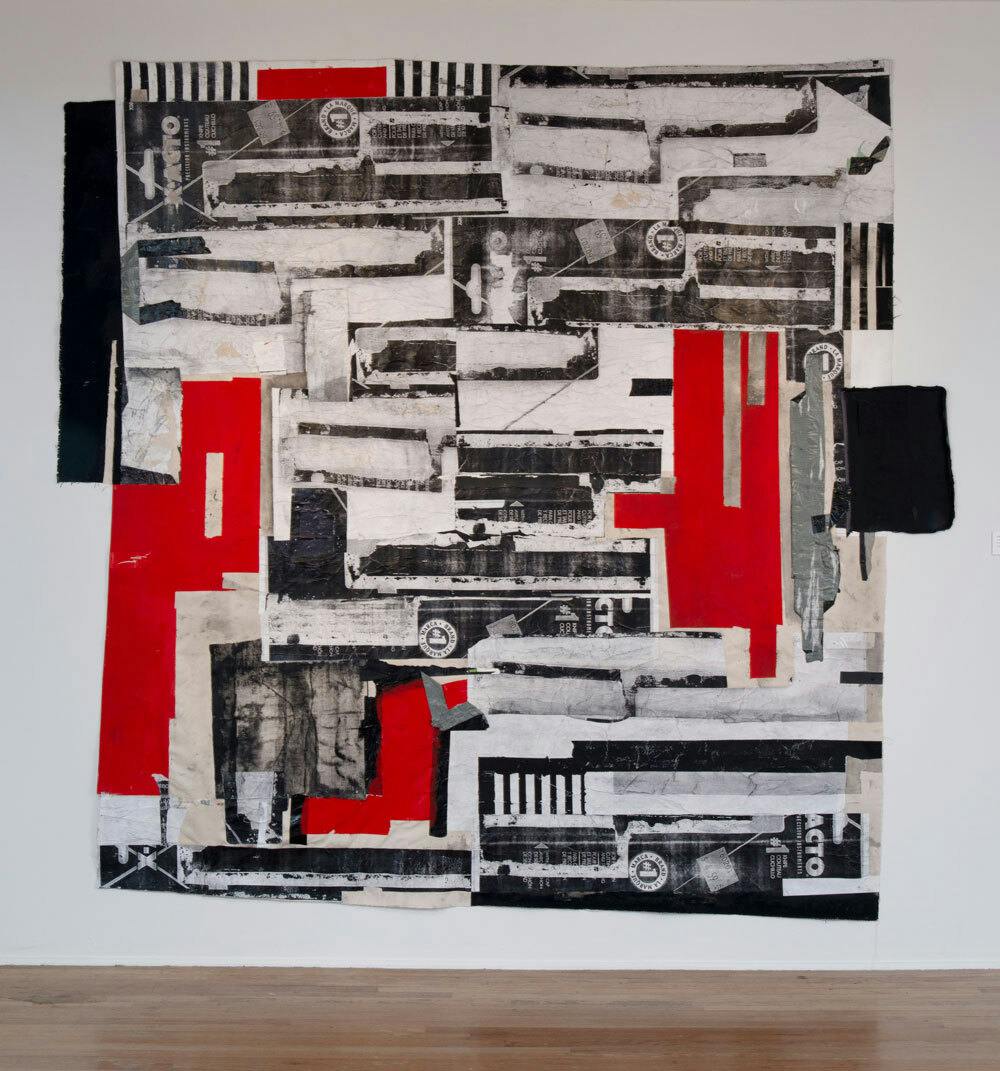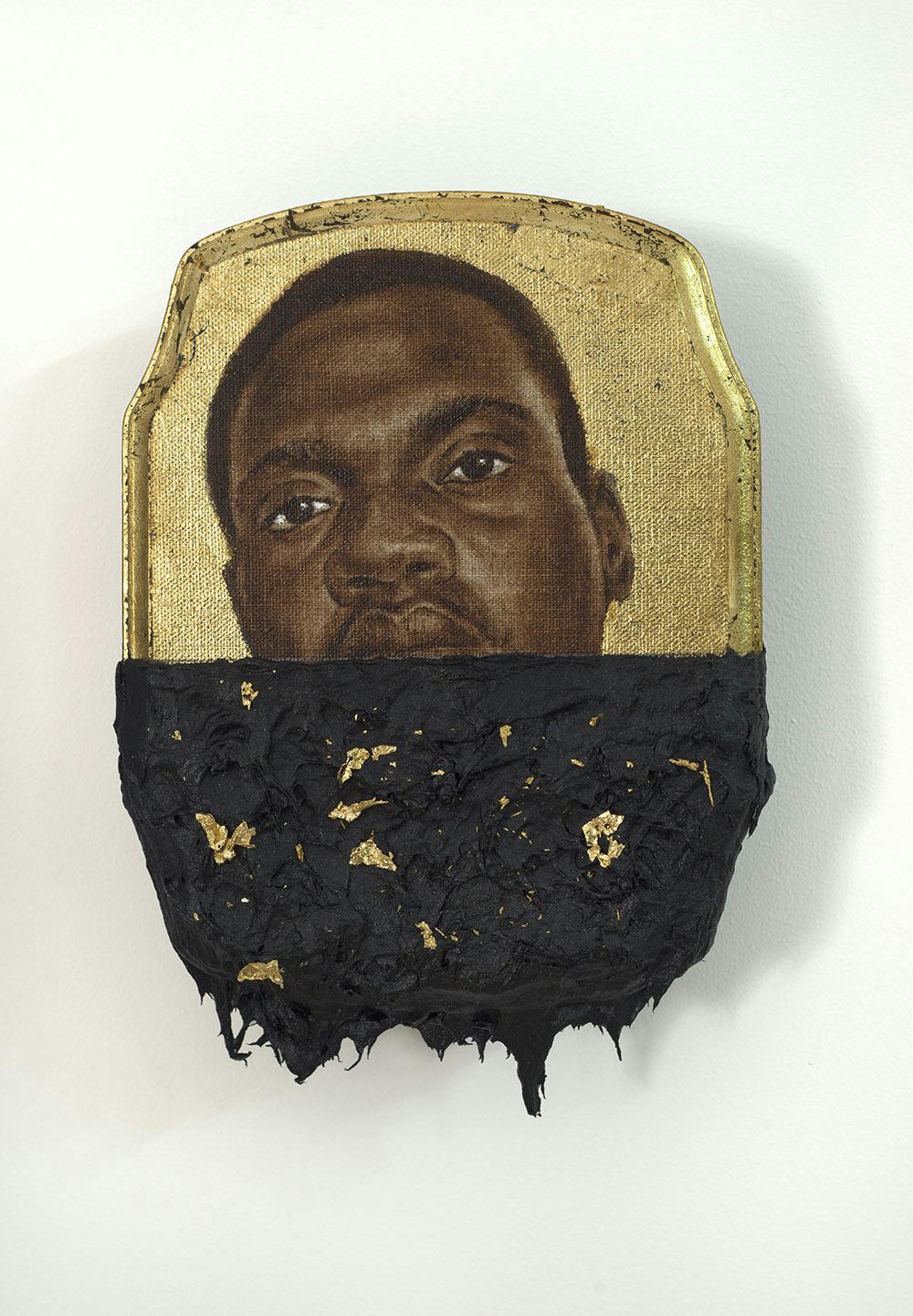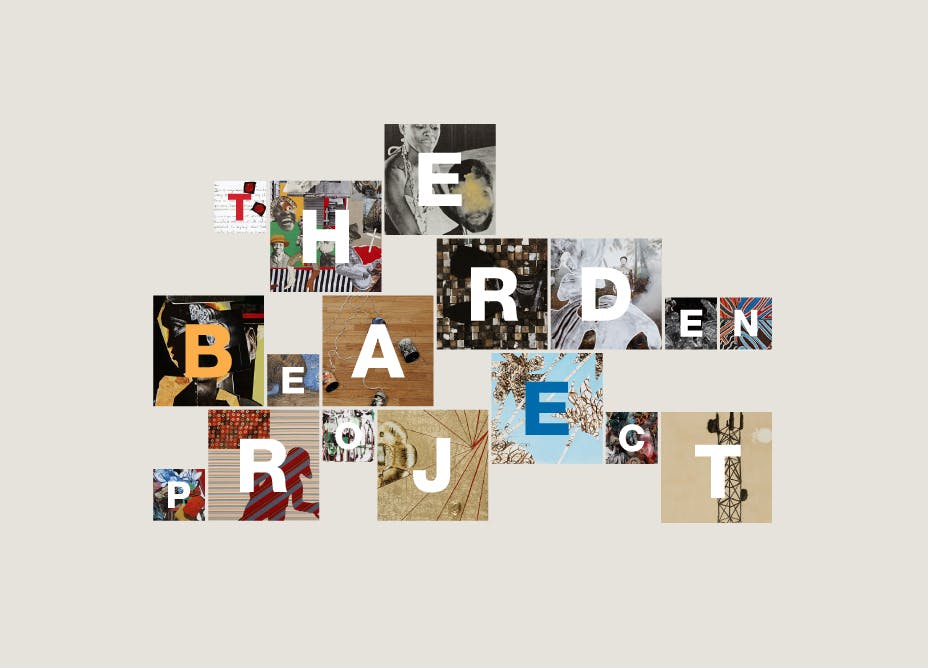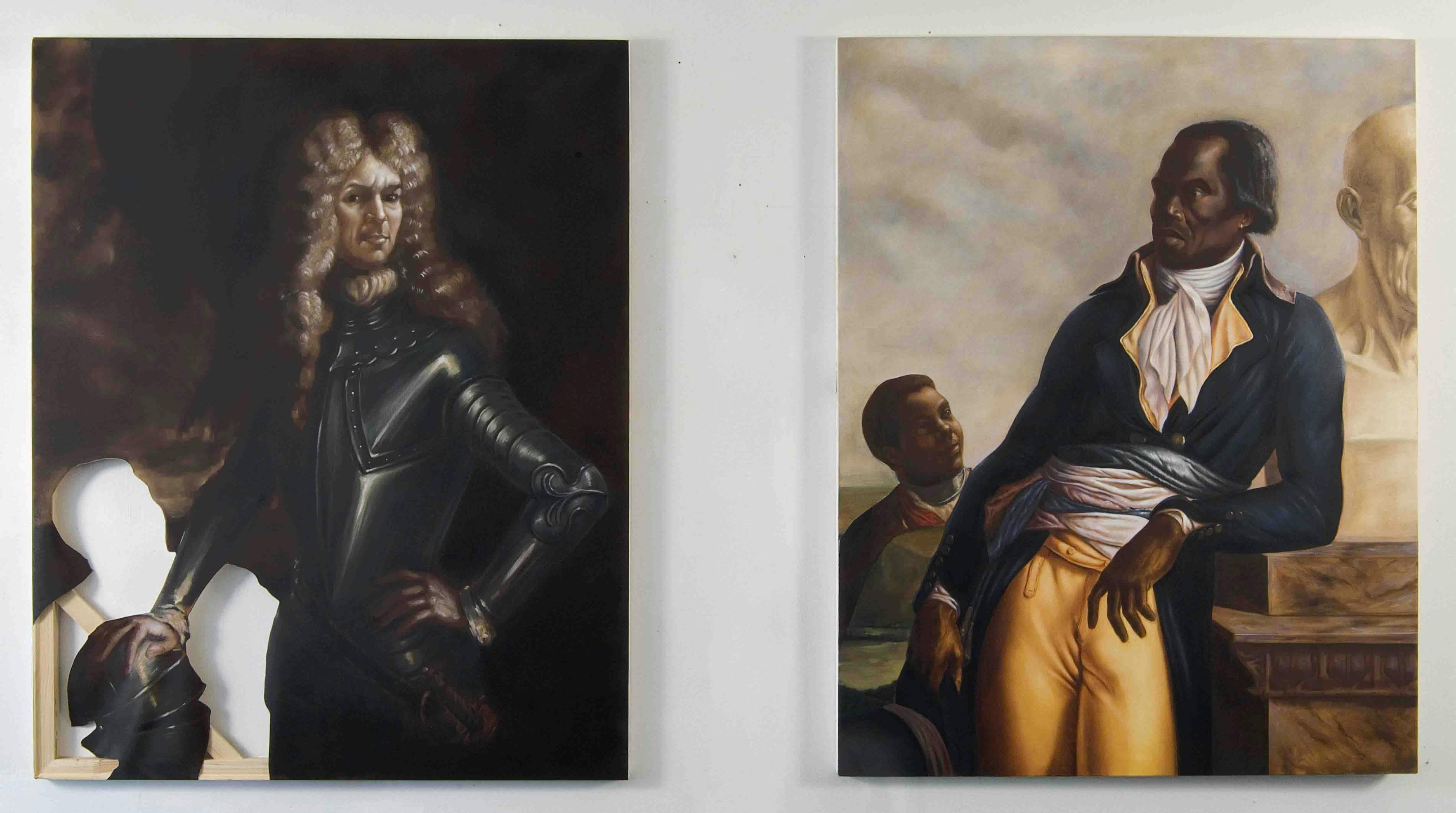Titus Kaphar
(b. 1976)
Titus Kaphar confronts and amends the canon of Western art history by including forgetten figures alongside prominent figures in historical paintings.
Biography
Titus Kaphar revises canonized approaches to artmaking to unearth understudied and hidden histories.
He spent his youth living with a variety of family members in his hometown of Kalamzaoo, Michigan, and in California. He discovered art in his mid-twenties, when, in an attempt to impress the woman who would go on to become his wife, he signed up for an art survey course at a junior college. He quickly became frustrated when told that the course would skip over the only section that addressed Black people as both artists and subjects within art history. He took his first studio art class after transferring to San Jose State University. In seeking out these obscured histories for himself, he frequented museums and taught himself to draw and paint by studying the works of European masters, as well as representational and postmodernist painting. Shortly after earning his MFA, he completed a residency at the Studio Museum.
Across a variety of media, Kaphar translates the absence of blackness from the art historical canon into new modes of looking, making, and study. He revises and alters the narratives, drawing attention to the understudied aspects of compositions. He begins with works by artists such Diego Velázquez, Jacques-Louis David, and Théodore Géricault. He creates his own version, then offers interventions by cutting, draping, stitching, erasing, and painting over elements of the composition. Kaphar summarizes his approach by asking, “What narrative in this particular image wasn’t the primary image, but is really important? That is really interesting to me, and then I try to tease that out as much as I can.”[1]
Kaphar earned his BFA from San Jose State University and MFA from the Yale School of Art. He received the Creative Capital Award (2015); MacArthur Fellowship (2018); and Wall Street Journal Magazine Virtual Innovators Award (2020). He is also the founder of NXTHVN, an arts incubator and fellowship program in New Haven, Connecticut. The Studio Museum has presented his work in exhibitions such as The Bearden Project (2012); Titus Kaphar: The Jerome Project (2014); and 20/20: The Studio Museum in Harlem and Carnegie Museum of Art (2017).
[1] Eloise Blandiau, “Amending American History with Titus Kaphar,” Interview, December 19, 2016.
Exhibitions and Events
Titus Kaphar
(b. 1976)
Titus Kaphar confronts and amends the canon of Western art history by including forgetten figures alongside prominent figures in historical paintings.
Lost in Shadows, 2014
Biography
Titus Kaphar revises canonized approaches to artmaking to unearth understudied and hidden histories.
He spent his youth living with a variety of family members in his hometown of Kalamzaoo, Michigan, and in California. He discovered art in his mid-twenties, when, in an attempt to impress the woman who would go on to become his wife, he signed up for an art survey course at a junior college. He quickly became frustrated when told that the course would skip over the only section that addressed Black people as both artists and subjects within art history. He took his first studio art class after transferring to San Jose State University. In seeking out these obscured histories for himself, he frequented museums and taught himself to draw and paint by studying the works of European masters, as well as representational and postmodernist painting. Shortly after earning his MFA, he completed a residency at the Studio Museum.
Across a variety of media, Kaphar translates the absence of blackness from the art historical canon into new modes of looking, making, and study. He revises and alters the narratives, drawing attention to the understudied aspects of compositions. He begins with works by artists such Diego Velázquez, Jacques-Louis David, and Théodore Géricault. He creates his own version, then offers interventions by cutting, draping, stitching, erasing, and painting over elements of the composition. Kaphar summarizes his approach by asking, “What narrative in this particular image wasn’t the primary image, but is really important? That is really interesting to me, and then I try to tease that out as much as I can.”[1]
Kaphar earned his BFA from San Jose State University and MFA from the Yale School of Art. He received the Creative Capital Award (2015); MacArthur Fellowship (2018); and Wall Street Journal Magazine Virtual Innovators Award (2020). He is also the founder of NXTHVN, an arts incubator and fellowship program in New Haven, Connecticut. The Studio Museum has presented his work in exhibitions such as The Bearden Project (2012); Titus Kaphar: The Jerome Project (2014); and 20/20: The Studio Museum in Harlem and Carnegie Museum of Art (2017).
[1] Eloise Blandiau, “Amending American History with Titus Kaphar,” Interview, December 19, 2016.



